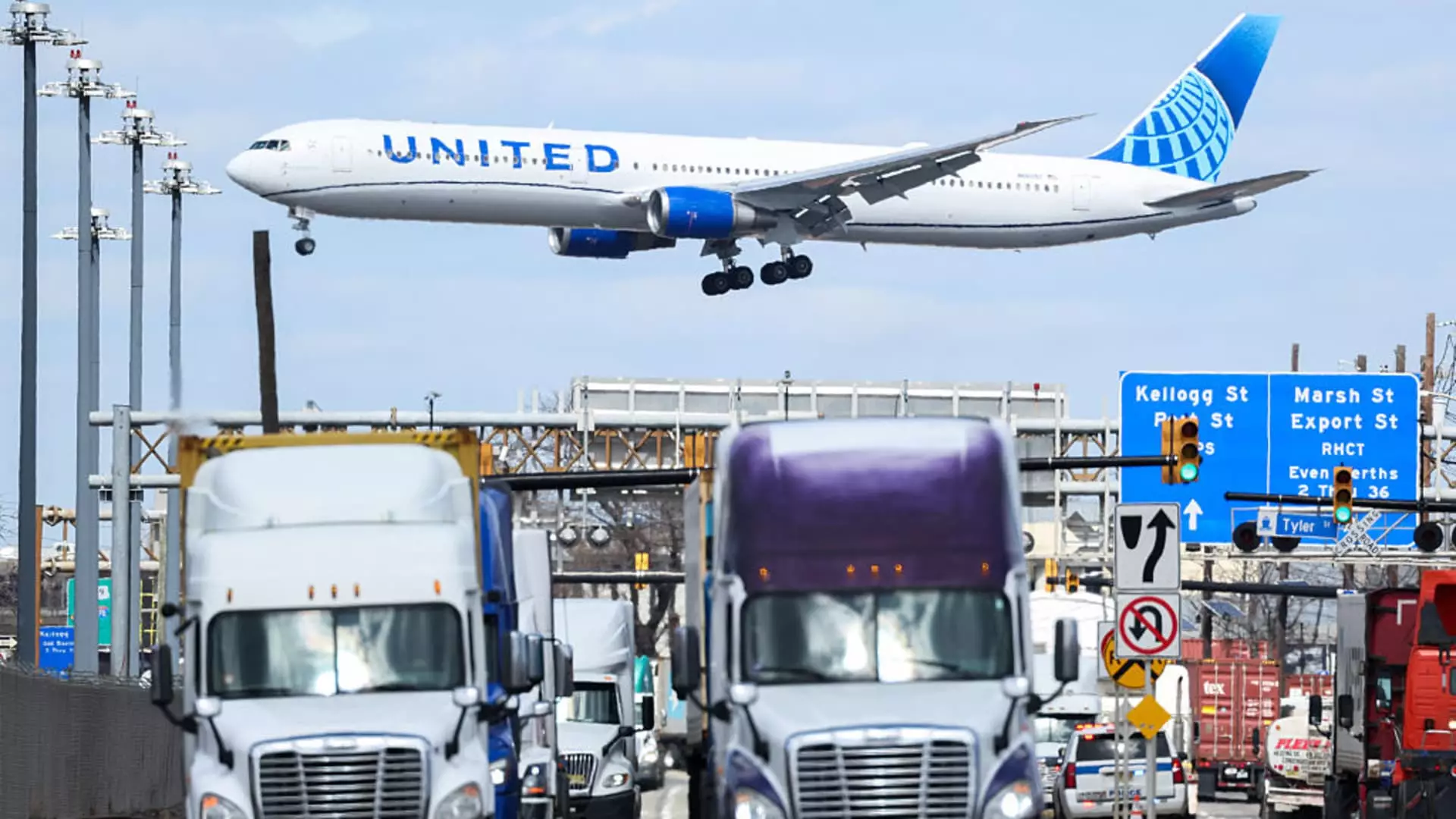United Airlines is navigating a complex landscape of fluctuating travel demands, as evidenced by its recent announcement to cut domestic flights by 4% starting this summer. This decision is a direct reaction to disappointing domestic travel metrics, contrasting sharply with the robust demand for international travel, particularly for higher-priced, premium experiences. The divergence in demand points to a strategic recalibration that United, along with other carriers like Delta, is compelled to undertake, emphasizing the need to remain agile amid shifting consumer preferences.
Strong Financial Performance Amid Mixed Signals
Despite the challenges in the domestic sector, United Airlines has reported a significant turnaround in its financial health. The airline reported a profit of $387 million in the first quarter, a stark contrast to the loss of $124 million during the same period last year. This rebound is noteworthy—it indicates that while domestic routes are faltering, the company’s position in the international market is flourishing. The focus on high-yield premium cabin bookings has proven fruitful, showcasing that travelers are still willing to spend on luxury experiences despite broader economic uncertainties.
Unit Revenue Dynamics: A Tale of Two Markets
The disparity between unit revenues from domestic and international routes further highlights the challenges United faces. Domestic flight revenue saw a decline of 3.9% year-over-year, reflecting a potentially stagnant market under increased competition and shifting consumer priorities. In contrast, international routes have thrived, with unit sales climbing over 5%. This bifurcation in revenue streams suggests that United must strategically evaluate its domestic offerings and enhance the overall customer experience to reclaim lost ground.
Implications of Economic Pressures
The backdrop of economic concerns, such as trade tensions and government layoffs, weighs heavily on consumer sentiment. United’s measured approach, choosing not to adjust its full-year earnings forecast drastically, hints at an awareness of these external factors. Interestingly, management’s proactive stance to project earnings between $7 to $9 per adjusted share in the face of potential recession demonstrates caution while maintaining optimism about the premium segment’s resilience.
Future Directions: The Premium Market’s Promise
United’s strategy to double down on international, premium travel segments seems well-calibrated given current market data. Travelers are increasingly seeking luxurious and unique experiences, and airlines that respond to this demand may thrive despite broader economic downturns. As the air travel landscape continues to evolve, United Airlines appears to be at a crossroads. It must secure its foothold in the competitive domestic market while capitalizing on the upward trajectory of international travel.
By embracing this dual-focus strategy, United not only aligns with lucrative consumer trends but also ensures it stays relevant in an ever-changing industry. The challenges ahead may be significant, but the potential rewards for airlines attuned to the intricacies of consumer behavior are immense.


Leave a Reply